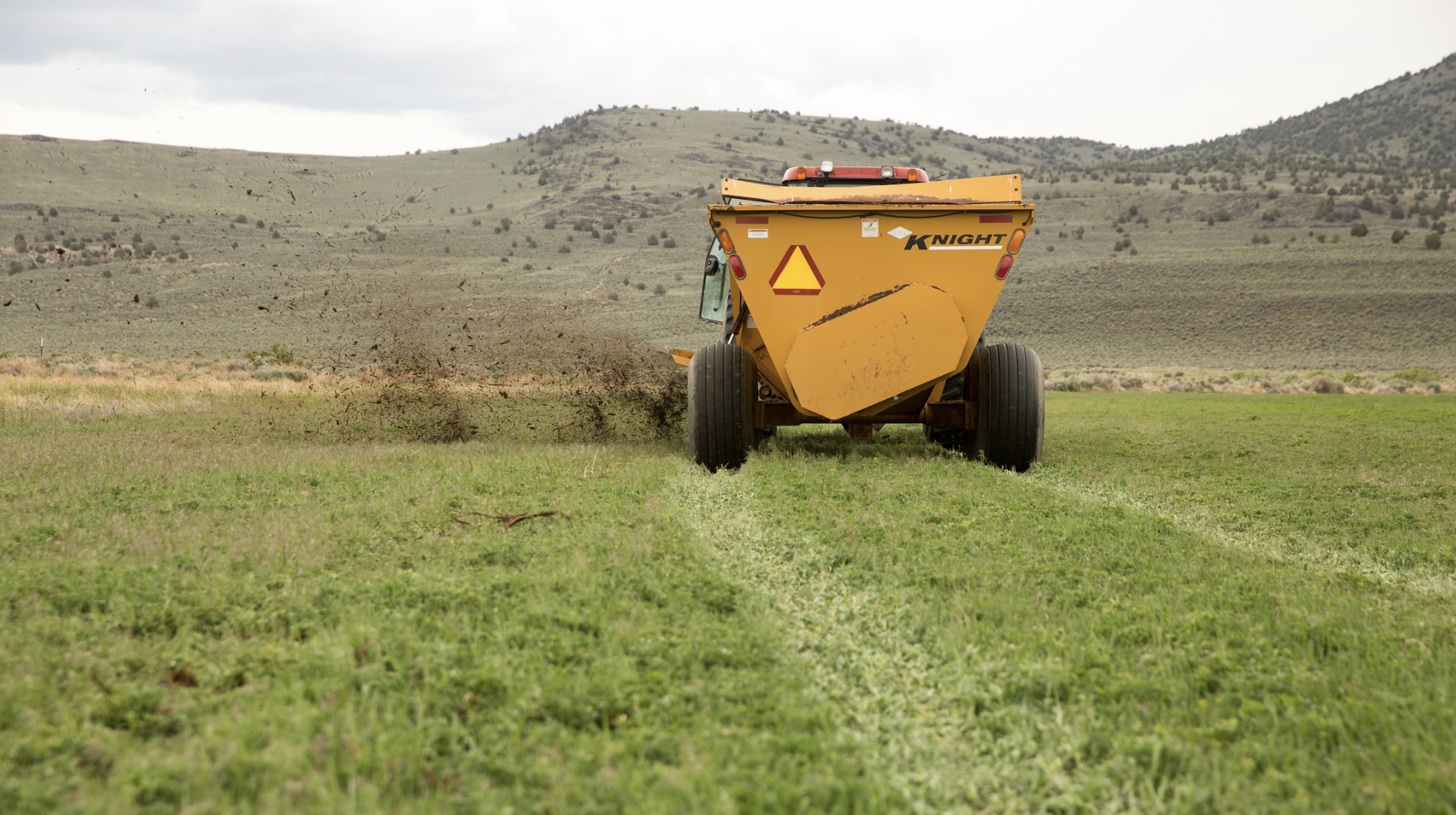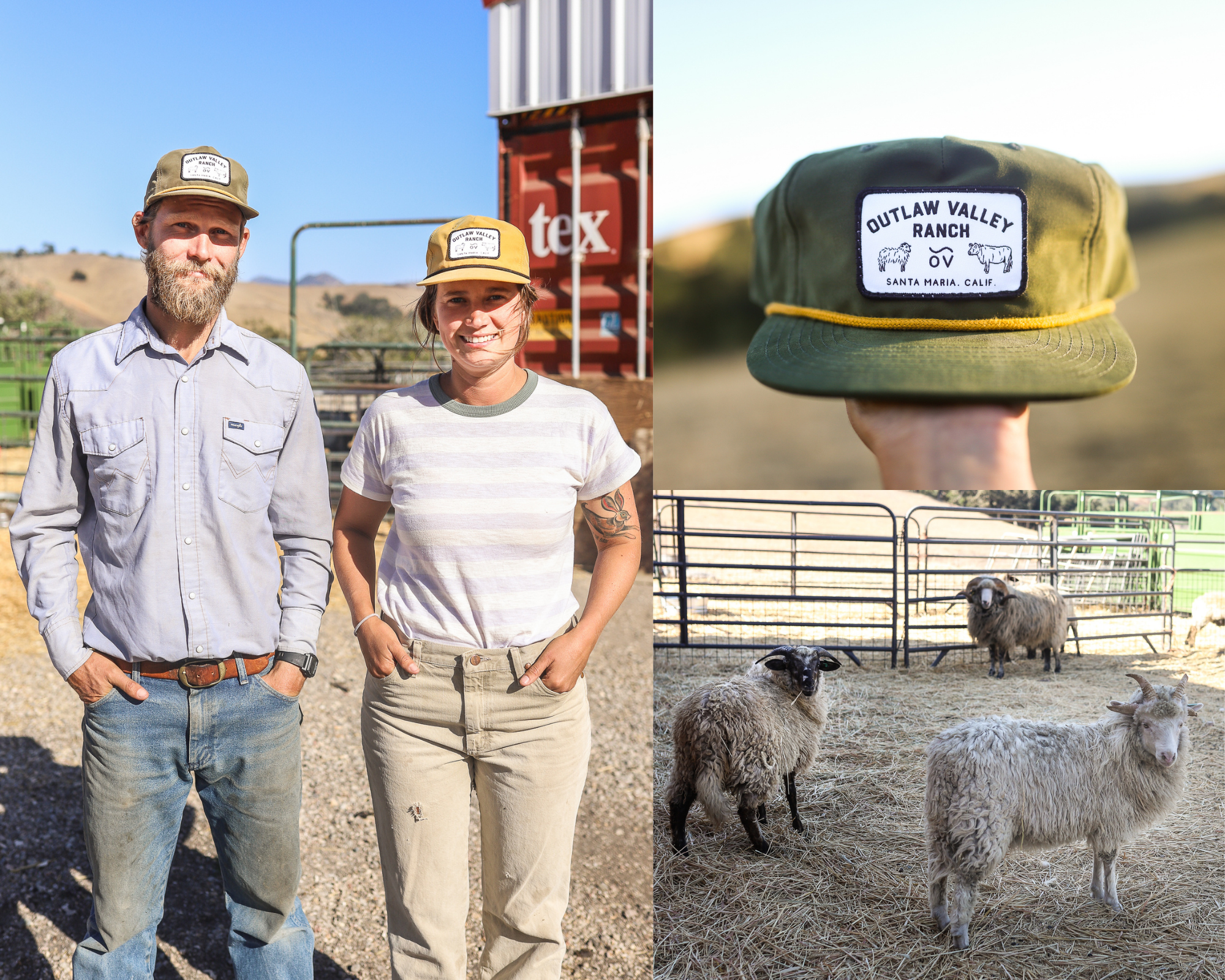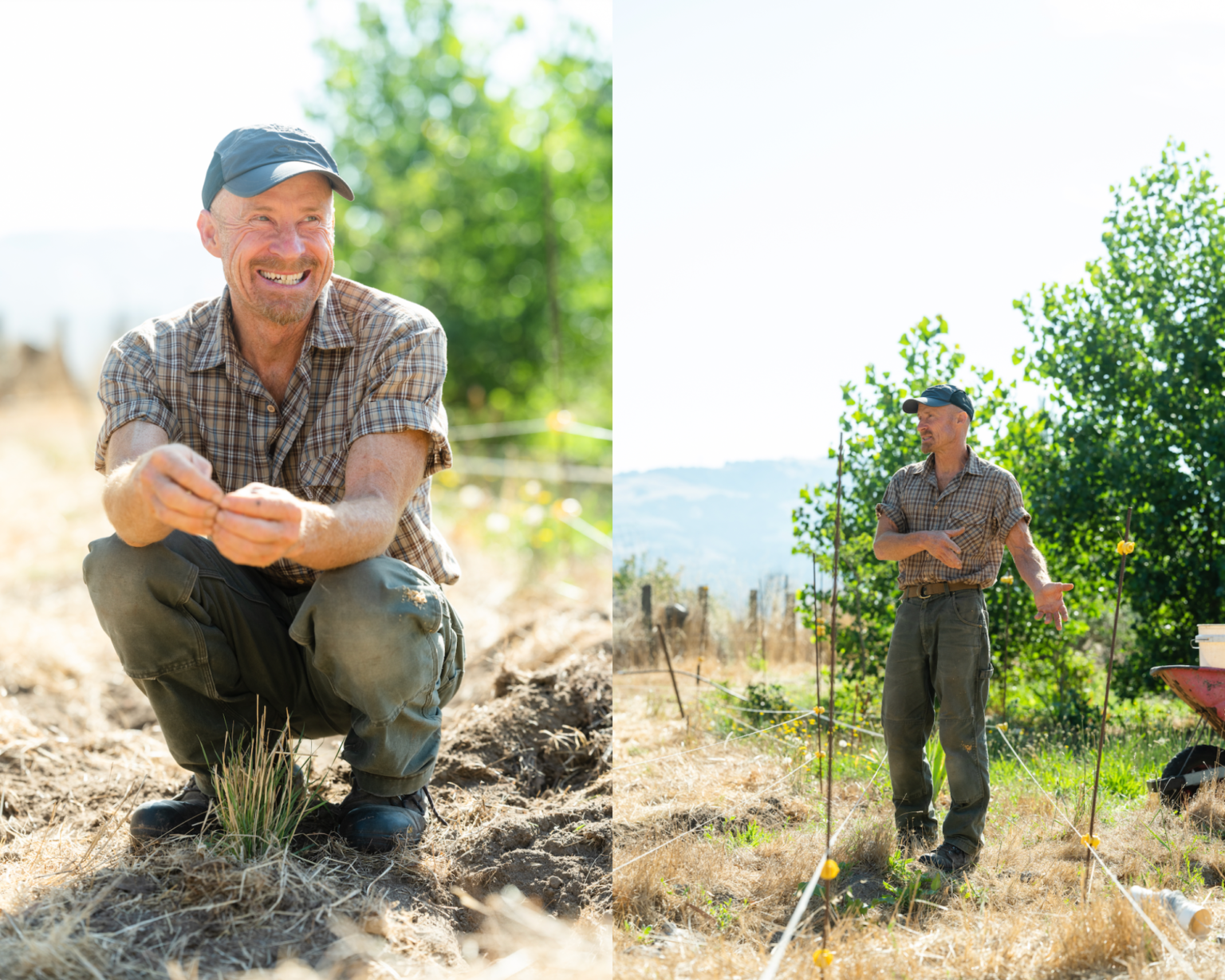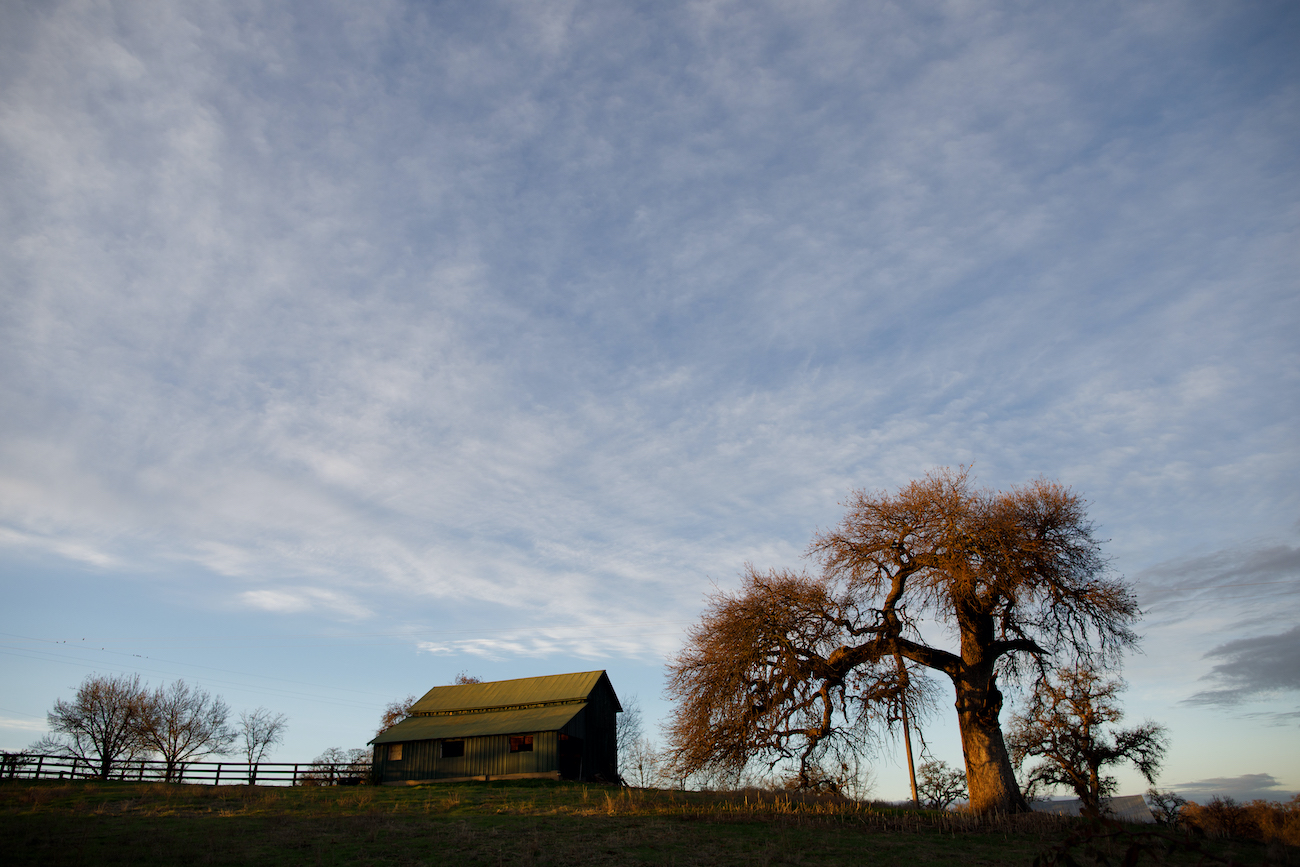Agriculture’s tremendous potential to stop and reverse climate change and Fibershed’s efforts to meet that challenge
The current system for feeding and clothing ourselves has had devastating impacts on the planet — it also holds massive potential for shifts that can benefit our climate and restore local economies. Agricultural practices can either deplete soil health or build healthy soils. Textile systems can exploit workers and pollute surrounding ecosystems; or they can be re-designed to support local, regenerative economies. A movement is building to slow down and reverse current trends and get us on a path to humanely-scaled, climate-benefiting natural fiber and dye systems.
The challenge — that there is now far too much carbon in our atmosphere — can be addressed through a regenerating and holistic approach to land stewardship known as carbon farming. Carbon farming is the leading solution that seeks to restore our global carbon balance and increase agricultural resilience. Carbon farming refers to a comprehensive set of agricultural practices that accelerate the rate at which carbon dioxide is removed from the atmosphere and drawn down into plant material and/or soil organic matter. The USDA’s Natural Resources Conservation Service recognizes 34 climate-smart on-farm conservation activities contributing to climate resilience. Farmers and ranchers are at the forefront of implementing these practices that both reduce greenhouse gas emissions and build healthy soils, while producing the food and fiber products we need to feed and clothe our population.

The transition to scaling climate-smart agriculture will require a broad range of support. This movement recently got a boost from the federal government, highlighting the importance of harnessing the capacity of our soils to sequester carbon. However, an intense acceleration is necessary to meet the reality of the speed and scale of our changing climate and other critical issues such as food insecurity, drought, and severe weather patterns.
Fibershed is working to ensure fiber farmers and ranchers have access to tools and resources to adopt carbon farming practices and be a part of the solution. Fibershed’s Carbon Farm Seed Fund is a grant fund that directly supports farmers and ranchers throughout the state in implementing carbon farming practices such as planting hedgerows or windbreaks, cover cropping, and spreading compost across their working lands, among many others. Financial and operational support is essential to the implementation of these land management practices. In 2022, Fibershed was able to award over $100,000 to 29 producers for carbon-farming projects with the support of generous donors.
Fibershed’s Carbon Farm Seed Fund also complements larger grant programs offered by the state and federal government and fills gaps where these larger funding sources are not able to provide support, especially for smaller and beginning farmers in our regional producer community.
These four stories highlight producers who are recipients of the Carbon Farm Seed Fund and have implemented regionally appropriate carbon farming practices on the lands they steward. Continue reading to learn about the methods and benefits of carbon farming and how you can become a partner to our regional farmers, directly supporting their critical work.
Stories from Carbon Farm Seed Fund Recipients
———
Perennial Green Goals at Meridian Farm
Petaluma, California

“Lofting’s intentions for Meridian Farm are ambitious and, some might say, borderline impossible in a locale with more 100-degree days and less rainfall. But her Carbon Farm Plan (CFP) describes how it can happen, beginning with its straightforward subtitle: ‘How a 9 Acre Smallholding in a Mediterranean Environment Can Sequester as Much Carbon as 57.2 Acres of U.S. Forests Each Year, and Experience the Equivalent of an Extra 5.2 Inches of Rain Annually.’ ‘I think my numbers are right,’ Amy laughs.”
———
First-Generation Agrarians Living the Not-So-Simple Life at Outlaw Valley Ranch
Santa Maria, California

“Alex and Kelsey Karol are the first-generation agrarians of Outlaw Valley Ranch, a business that has hit its stride even as it restarts from scratch in a new locale. As of last year, Outlaw Valley Ranch sits on 345 hilly acres in Santa Maria, California, between San Luis Obispo and Santa Barbara. It is the base of a diversified operation of direct meat sales – lamb and beef – and Navajo-Churro yarn and hides.”
———
———
A Life Filled with Meaning at Green Goose Farm
Cotati, California

“Grass is my crop,” Roy Smith says, smiling. “Grass is California’s one ‘default crop’: it grows without intervention and feeds all life forms. We need ways to convert that default crop into a feed source for everyone else.” A diverse group of grass-grazing animals – pigs, geese, and sheep – is key to Roy’s 7.5-acre land restoration operation in Cotati, California. “Every animal must contribute to the land,” he adds. “That is their primary role.”
———
Carbon Farming and Co-Benefits at PT Ranch
Ione, California

“At PT Ranch, 525 acres sit at the base of the Sierra mountains, where melted snowcap hydrates the land. Historically, with the abundance of moisture in the soil, grass has grown plentifully. But with the increasing droughts, the Taylor family, including Molly, her sister Madeline, her mother Emily, and father Ned, with the help of their full-time employee Alejandro Chavez, need to be more strategic. For the most part, they have been able to raise about 150 animals, year-round, by managed grazing on the grass alone, along with some feed such as pellets of grain for the poultry. The ranch belonged to Molly and Madeleine’s grandparents but was managed by people outside of the family until the Taylor family decided to manage it themselves.”
———
Further Learning:
- Carbon Farming Practices
- Tending the Edges: The Benefits of Hedgerows on Bay Area Working Lands, available in English and Spanish
- Carbon Farming Webinar
- Takeaways from the 2021 Carbon Farm Seed Fund
- Regional Fibershed Communities Adapt to Global Climate Change
- Carbon Farming Presentation by CCI, Napa RCD, and Marin RCD

